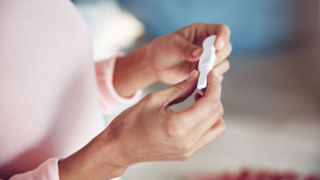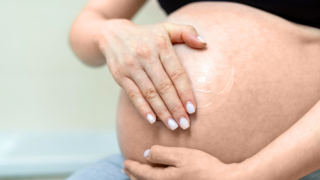In this article:
Understanding how to take care of yourself after an episiotomy can make a big difference. Gentle care, rest, and knowing when to seek help are key parts of the process.
How Long Does it Take to Heal?
Healing from an episiotomy usually takes about one month. Though this can vary depending on the severity of the incision. First and second-degree episiotomies usually heal faster, while third and fourth-degree tears may take longer due to their depth. You might feel pain and soreness for the first 2 to 3 weeks. Activities like sitting or having sexual intercourse (if approved by your doctor) can feel uncomfortable during this time. Natural perineal tears generally take a similar amount of time to heal. Keep your healthcare professional informed about your pain levels to make sure your recovery is on track.Caring for Your Episiotomy Incision
Proper post-episiotomy care is important to promote healing. These are some practical steps to help you recover comfortably:- Keep the area clean and dry: Clean your genital area from front to back after urination or bowel movements to reduce the risk of infection. Use a peri bottle filled with warm water to gently rinse the area.
- Use ice packs: Apply a perineal cold pack to reduce swelling and soothe soreness in the first few days after delivery. These are often available at hospitals or can be purchased.
- Try warm sitz baths: Soak your perineal area in a shallow bath of warm water to promote healing and ease pain.
- Use numbing sprays: Numbing sprays can help relieve pain and itching. Follow your doctor’s instructions for safe use.
- Sit on a donut pillow: A donut-shaped pillow takes pressure off the perineal area when sitting, making you more comfortable during recovery.
- Manage pain with medication: Take over-the-counter pain relievers as advised by your doctor.
- Prevent constipation: Eat a diet rich in fibre, drink plenty of water, and use stool softeners (if recommended by your doctor) to avoid straining during bowel movements.
When Can You Resume Sexual Activity?
Discomfort during sexual intercourse is common for several months after an episiotomy, particularly if the incision was deeper. Your perineum should be fully healed by about six weeks postpartum, but you must wait for your doctor’s approval before resuming intercourse. This usually happens at your postpartum check-up. Using a water-based lubricant can make intercourse more comfortable during this time. Inform your doctor if pain continues beyond a few months, as they can assess whether scarring or other issues are contributing.Possible Complications of an Episiotomy
Most episiotomies heal without problems, but there are certain complications to be aware of. These can also occur with natural perineal tears:- Excessive bleeding: Heavy bleeding or blood collecting (haematoma) at the incision site can occur.
- Infection: Look out for pus, foul-smelling discharge, redness, or swelling around the stitches, as these may indicate an infection.
- Anal sphincter or rectal damage: Third or fourth-degree tears can affect the anal sphincter or rectum, potentially causing fecal incontinence or difficulty controlling bowel movements.
- Urinary incontinence: Damage to the pelvic floor muscles may lead to temporary or ongoing challenges with bladder control.
- Painful intercourse (dyspareunia): Scarring or incomplete healing can cause discomfort during sex, sometimes lasting for months.
- Swelling or scarring: Persistent swelling or severe scarring at the incision site may require additional medical attention.
- Prolonged recovery: Complications like infection or deeper tears can extend the healing time beyond the usual month.
- Necrotizing fasciitis: This rare but serious infection can cause symptoms like skin discolouration, severe swelling, or tissue death.
When to Contact Your Doctor
Contact your doctor right away if you notice any of these warning signs during your recovery:- Pain that gets worse instead of improving over time.
- Foul-smelling discharge or pus coming from the incision.
- Redness or swelling around the stitches.
- Bleeding at the incision site.
- Fever, chills, or general body aches.
- Difficulty controlling urine or bowel movements.
- Severe pain in the lower abdomen.
Supporting Your Recovery
Healing from an episiotomy takes time and rest is crucial to give your body the chance to recover. Try to rest as much as possible, even with the demands of caring for a newborn. Continuing pelvic floor exercises can improve circulation and strengthen the perineal muscles, but only do these if your healthcare professional approves. Open communication with your doctor is important during this time and don’t hesitate to share any concerns or ask questions about your recovery.Will You Need an Episiotomy in Future Pregnancies?
You’re unlikely to need an episiotomy in subsequent pregnancies. But this depends on your specific circumstances during labour. Factors like your baby’s size, position, or scar tissue from a previous episiotomy could influence the decision. Scar tissue may not stretch as easily and require another incision. Your healthcare professional will evaluate the need during delivery and discuss it with you.Recovery after an episiotomy can feel challenging at first, but your body will gradually heal with proper care and support. Pay attention to your symptoms, follow your doctor's advice, and give yourself time to rest. Most people recover well within a few weeks. But always remember to contact your healthcare professional if you notice anything unusual or feel unsure. Avoid self-medicating based on information found online.
FAQs on Recovery After Episiotomy: Healing, Care, and Possible Complications
- How long does it take to heal from an episiotomy?
Most people heal within 3 to 4 weeks, but deeper cuts (third or fourth degree) may take longer. Your doctor will guide you based on your recovery. - How can I care for my episiotomy stitches at home?
Keep the area clean and dry, rinse with warm water using a peri bottle after using the toilet, and avoid harsh soaps. Use cold packs and sitz baths to ease discomfort.






